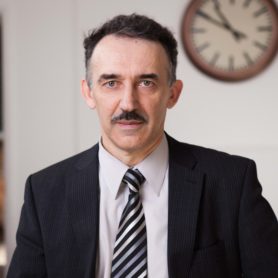Dr. Andrei Seryi
Associate Director at Thomas Jefferson National Accelerator Facility
Lectures
Breakthrough By Design
Science has yielded a rich history of inventions, ones often inspired by Nature itself. Despite all this progress, we have always strived to find more efficient approaches to inventing. In fact, during the second half of the 20th century, the industrial world developed specific methodologies with which to promote inventiveness. Though powerful, these methods were rarely heard of outside of this field, particularly in the scientific community. The most advanced methodology, the so-called “theory of inventive problem solving”, has become, according to Forbes, the bedrock of innovations in such companies as Samsung. While the industrial inventiveness methods were originally created for engineering, the core ideas of these methodologies are universal and, if combined with the art of back-of-the-envelope estimations, can also be applied to science and university education in general. In this lecture we shall show how the theory of inventive problem solving can be used, and can be taught, in various areas – from philology to accelerator physics – in order to create a powerful and eye-opening amalgam of science, engineering and inventiveness.
Evolution of scientific instruments – from methodology of inventiveness TRIZ to applications of plasma acceleration
Introduction of industrial methodology of inventiveness TRIZ in application to accelerator science and technology and in particular to the advanced acceleration methods such as beam driven and laser driven plasma acceleration. We will discuss the basic principles of plasma acceleration, generation of radiation and creation of compact synchrotron light sources and free electron lasers, and will use TRIZ inventive principles to connect seemingly disconnected technical areas, enhancing the big-picture understanding of this dynamically evolving field of modern science and technology.
Accelerator Science and Technology via Inventive Principles of TRIZ
A swift overview of modern areas of accelerator physics and technology presented via and connected through inventive principles of TRIZ – the industrial methodology of inventiveness. Wide range of topics, from synchrotron radiation to electron cooling, or plasma acceleration, to name a few, introduced via easy to follow back-of-the-envelope derivations, and connected via canonical yet adjusted for science TRIZ inventive principles and laws, are illustrated by numerous inventions such as fiber lasers, tune jumps, inverted guns, and many others. This short tutorial is a gateway opening to you a new approach, which creates an amalgam of science and industrial inventiveness, enhances creativity and boosts innovations towards developing the next generations of accelerators and their applications.
About

Professor Andrei Seryi is an Associate Director for accelerator operations and R&D at Thomas Jefferson National Accelerator Facility and Governor’s Distinguished CEBAF Professor at Old Dominion University. Until 2018 Prof. Seryi served as a director of the John Adams Institute for Accelerator Science in the UK and a Professor at Oxford University. Previously he worked at Stanford Linear Accelerator Center. Prof. Seryi contributed to development of linear colliders and plasma acceleration. He is a Fellow of the American Physical Society. His professional interests include development of accelerator science applications for discovery science, industry, healthcare and energy; organizing of scientific research; project management; inventions and innovations; and developing novel training approaches and methods.